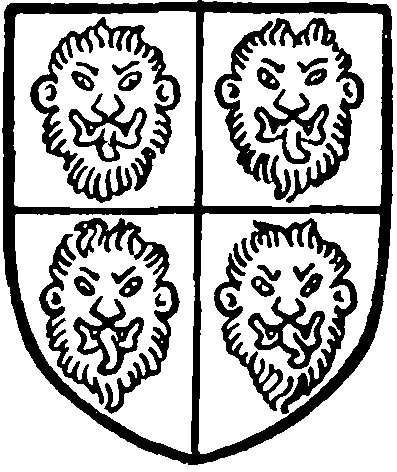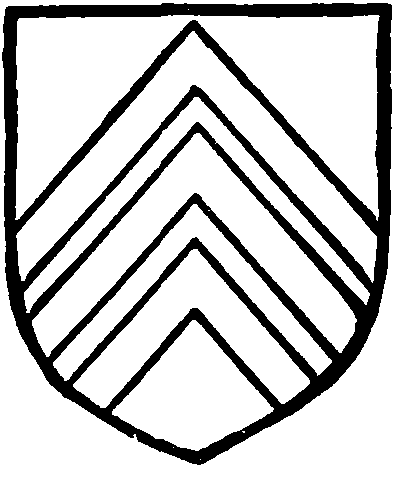A History of the County of Lancaster: Volume 6. Originally published by Victoria County History, London, 1911.
This free content was digitised by double rekeying. All rights reserved.
'Townships: Cuerdale', in A History of the County of Lancaster: Volume 6, ed. William Farrer, J Brownbill (London, 1911), British History Online https://prod.british-history.ac.uk/vch/lancs/vol6/pp300-303 [accessed 7 February 2025].
'Townships: Cuerdale', in A History of the County of Lancaster: Volume 6. Edited by William Farrer, J Brownbill (London, 1911), British History Online, accessed February 7, 2025, https://prod.british-history.ac.uk/vch/lancs/vol6/pp300-303.
"Townships: Cuerdale". A History of the County of Lancaster: Volume 6. Ed. William Farrer, J Brownbill (London, 1911), British History Online. Web. 7 February 2025. https://prod.british-history.ac.uk/vch/lancs/vol6/pp300-303.
In this section
CUERDALE
Kiuerdale, xii-xiv cent.; Keuerdale, xiv-xvi cent.; Cuerdall, xvi-xviii cent.
The township lies between the Rivers Ribble and Darwen to the north of Walton-le-Dale on a slight ridge of ground, varying from 150 ft. to 170 ft. above the ordnance datum, which slopes down to the banks of the two rivers. A detached portion of the township called Cuerdale Hey lies between the townships of Samlesbury and Hoghton, south of Beasting Brook. The subsoil is the pebble beds of the Bunter series, except over a very small area on the south-east, where it consists of the Permian rocks. Towards the River Ribble a large area is covered by alluvial deposits. The township covers an area of 684 acres, and the population in 1901 numbered 51 persons, occupying nine houses. (fn. 1) The land consists of fertile meadows and pastures with woodland upon the steep bank above the alluvial ground. (fn. 2) The main road from Blackburn and Clitheroe to Walton-le-Dale passes through the township, a lane branching off to Higher Walton. The noted Cuerdale hoard of silver coins was discovered in 1840 whilst repairs were being done to the bank of the Ribble a short distance below Cuerdale Hall. (fn. 3) Some relics of early man have also been found here. (fn. 4) The township forms part of the ancient parochial chapelry of Low Church or Walton-le-Dale. A wayside cross formerly stood near the centre of the township. (fn. 5)
In 1662 the puture rent for the township amounted to 3s. 4d. and was paid by: Richard Coope 5d., Thomas Thornley's tenement 5d., John Smith 3d., John Marsden 2d., Richard Seedall 4d., George Blakey 4d., Thomas Worthington 2d., John Dave 1d., Margaret Bruer, widow, 1d., Abraham Ernshaw 1d., George Coope 2d., Robert Blakey 3d., paid by the constable 7d.
Cuerdale was rated as one plough-land, was charged with the sum of 11s. 10d. to the subsidy of 1332, and contributed to a 'fifteenth' 11s. 6d. out of £37 1s. 7d. charged upon the hundred. (fn. 6)
Manor
The first possessor of whom mention is found was Warine de Kiuerdale, living in the time of Henry II, Richard I and John, of whose charters two have been recorded. (fn. 7) He had a numerous family, Gilbert, who afterwards held half the manor, and Gospatric, Peter, Richard and Siegrith, to each of whom he seems to have given a share of the remainder. Gilbert eldest son of Warine attested with his son Alexander the charter of Hugh Bussel granting North Meols to the ancestor of the Singleton family, which was also attested by Richard de Vernon the sheriff (1189–94). (fn. 8) Alexander son of Gilbert died before 1246, and was father of another Gilbert, (fn. 9) who was one of the jurors from this hundred at a special county court held at Lancaster that year. (fn. 10)
Alexander de Cuerdale son of Gilbert occurs from 1246 to 1284. He acquired various portions of the township from his kinsfolk, the most important acquisition being that of half the manor from Ellen daughter of Adam son of Gospatric de Cuerdale in 1285. (fn. 11) A few years earlier, and whilst Gilbert de Clifton was seneschal of Blackburnshire, he obtained from the Earl of Lincoln remission of the yearly service of 10s., which appears to have been paid as farm of the fishery within the manor. (fn. 12) Alexander his son occurs in 1296, 1305 and 1311 holding the manor of the Earl of Lincoln by the rent of 10s. at St. Giles. (fn. 13) By his wife Mary he had sons Robert and Geoffrey, and died before 1323. (fn. 14) Robert held the manor in 1327, (fn. 15) but died soon after without issue. His brother Geoffrey occurs in 1306 and in 1311, when he held a moiety of Over Darwen in right of his wife Alice, but he died before 1314. (fn. 16) His widow afterwards married William Lawrence, and was living in 1356. (fn. 17)

Cuerdale. Quarterly argent and sable four leopards' faces counterchanged.
John de Cuerdale son of Geoffrey and Alice attained his majority about 1330, and two years later contributed to the subsidy. (fn. 18) He gave lands here and in Walton of 5 marks yearly value to Whalley for the health of his soul, and was buried in the 'new conventual church' there on 20 October 1345. Six months after his death the manor-house of Cuerdale was totally destroyed by fire. (fn. 19) By Dionisia his wife, who afterwards married John de Barton of Barton in Amounderness, he had issue two daughters, Alice, who married Edmund son of John Lawrence of Ashton, near Lancaster, and Joan, who married Thomas de Molyneux. (fn. 20)
Thomas son of Thomas Molyneux of the Edge in Sefton was a man of some notoriety. He inherited the Edge in Sefton, Northbrook in Walton-on-the Hill and other properties from his father, who had received them as a provision from Richard de Molyneux lord of Sefton, his father. (fn. 21) He also acquired various small properties and in 1356 purchased from his wife's relatives their life interest in this manor and other settled estates. (fn. 22) Thomas Molyneux, esq., contributed to the poll tax of 1379, (fn. 23) and the year following received pardon at the instance of the Duke of Lancaster with several of his neighbours for some felony which he had committed, and in 1386 went to Ireland in the retinue of Sir John de Stanley, kt. (fn. 24) The year following, on 20 December, he was killed at Radcot Bridge in Oxfordshire in the engagement in which the king's favourite Robert de Vere was defeated by the Earl of Gloucester. (fn. 25) His wife, by whom he had no issue, survived him and was living in 1394. His brother Richard died before 1368, leaving issue by Leticia his wife Thomas, who married Joan le Boteler and died without issue before 1388. Thomas de Molyneux had also two sisters, Emma the wife of Richard son of Nicholas Blundell of Crosby, (fn. 26) who left no issue, and Katherine, who in 1336 had been married to Alexander de Osbaldeston. In accordance with his will (fn. 27) this manor, half the manor of Over Darwen and other estates descended after the death of his wife to his sister Katherine, then the wife of Thomas Banastre of Osbaldeston, and at her death about 1410 passed to her grandson Thomas Osbaldeston, as stated in the account of Osbaldeston. About this time a mesne lordship of the manor was created in favour of Henry Langton of Walton-le-Dale, whose daughter Isabel was married to Thomas Osbaldeston's son and heir Geoffrey in 1410–11. (fn. 28) From that time the manor has been held by the Osbaldestons and their successors of the Langtons and their successors by fealty and the render of a red rose. (fn. 29) During the next two centuries the manor passed with the other estates of the Osbaldeston family, until alienated on 1 March 1614 by Edward Osbaldeston to Ralph Assheton of Lever and Radcliffe Assheton his son, (fn. 30) whose descendant Mr. Ralph Cockayne Assheton of Downham is the present lord of the manor and owner of part of the township.
Richard Assheton's house had twelve hearths liable to the tax in 1666, but no other had as many as three; the total number of hearths in the township was twenty-five. (fn. 31)

Langton. Argent three chevronels gules.

Osbaldeston. Argent a masclesable between three pellets.
CUERDALE HALL stands in a low situation near the south bank of the Ribble about a mile north-east of Walton-le-Dale, the principal front facing north to the river. The house, which is of two stories, is now divided into two and is of little architectural interest, so many alterations and additions having been made that the disposition of the original plan has been lost and the external appearance of the building completely changed. It appears to have been a 17th-century structure of brick and stone, some portions of which remain at the back, where two stone buttresses against the old brick wall probably mark the position of the hall. The north front seems to have had two projecting gabled end wings, the plan most likely following the usual type, but additions have been made at either end and a long wing built at the south-east corner at right angles to the main building. The house now has a quite modern appearance with plain brick gables and blue slated roofs, and the north elevation has been spoiled by the erection in front of a low one-story brick addition. The house is said to have been partly rebuilt in 1700 by William Assheton and an old oak staircase with turned balusters and square newels in the east wing may belong to this period. A panelled room on the south side, however, appears to be of rather later date, and there is another staircase with flat pierced balusters in the west wing. The building was allowed to fall into neglect when it ceased to be the residence of the Asshetons, and is now partly used as a farm-house. On the north side are two well-designed stone-cased gate piers with coupled Corinthian pilasters and urn ornaments; but the gardens no longer exist, though there are still traces of the great avenue of trees on the south side by which the house was approached from the high road.
The family of Cliff, probably descended from Richard a younger son of Warine de Cuerdale, held lands here which John de Elleslegh in right of his wife Alice daughter and heir of Richard del Cliff claimed in 1354 from the Abbot of Whalley, but unsuccessfully. (fn. 32) Gilbert de Styholme was the grandfather of Richard, whose son was charged in 1353 with depasturing the crops of John son of Alexander de Longleigh in Cuerdale. (fn. 33) William Langley held at his death in 1592 a messuage here which descended to his nephew Robert Woodroffe of Walton-le-Dale. (fn. 34) Christopher Smyth died in 1589 seised of a small estate here which was held of John Osbaldeston, esq., in socage and descended to Edmund Smyth his son, who held of Radcliffe Assheton, e.q., in 1620. (fn. 35) The subsidy rolls record no persons assessed on lands except the lord of the manor. In 1626 Robert Langton and William Cowpe were assessed upon goods. (fn. 36)
